Review: Obi-Wan Kenobi, Part I & II
June 6, 2022
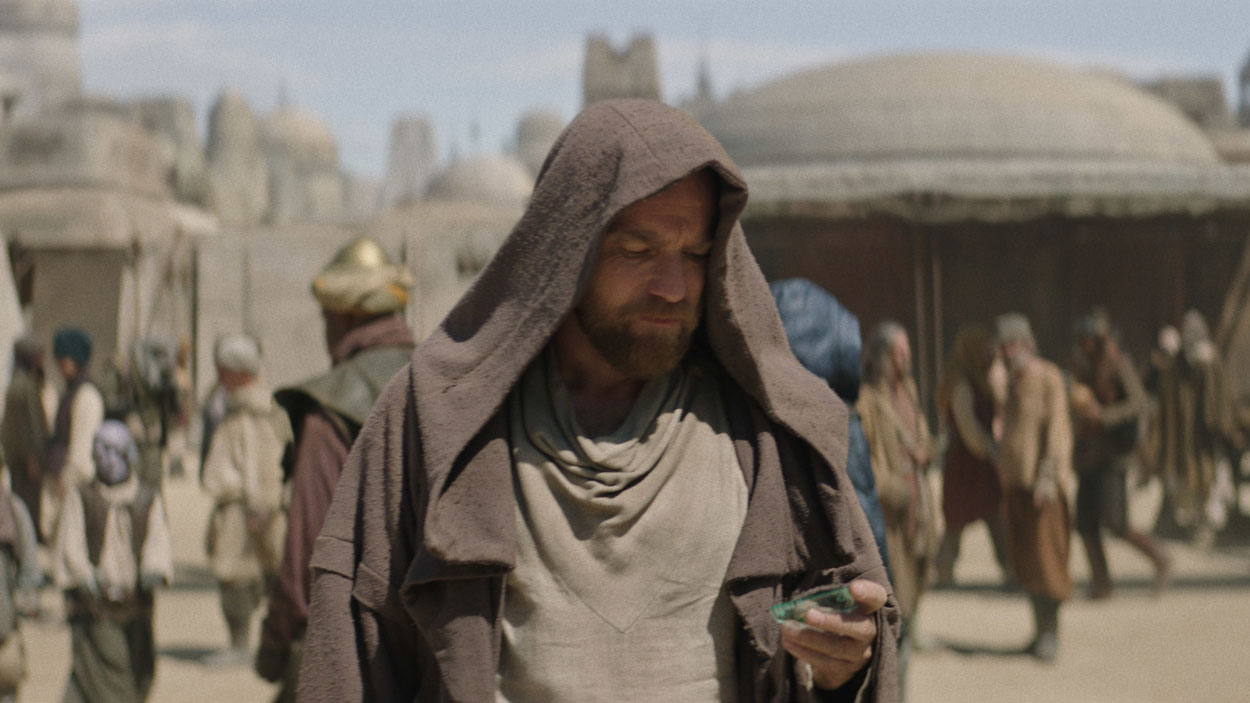
WARNING: The following contains spoilers for Obi-Wan Kenobi Part I & II, as well as the prequel trilogy and Star Wars: A New Hope.
As the opening credits rolled for Part 1 of Obi-Wan Kenobi, I found myself cautiously excited. The episode itself begins with a quick recap of the prequel trilogy—a series of films loved by my generation, scorned by critics, and today regarded with a certain sense of irony. Undeniable in its ambition, the prequel trilogy sought to tell the complex, political story of Palpatine’s rise to power, the fall of the jedi order and most importantly, the tragic transformation of our hero Anakin Skywalker into one of the most iconic film villains of the 20th century: Darth Vader.
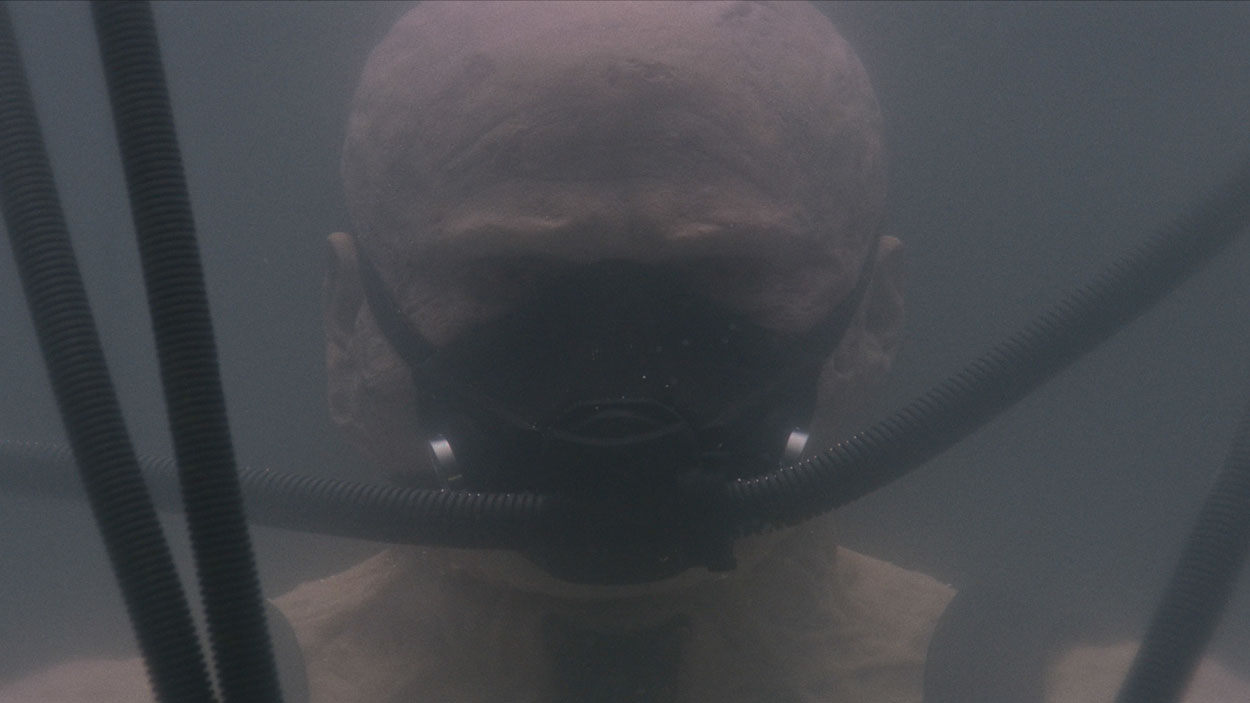
Anakin healing inside his bacta tank
One of the main threads of continuity weaving his way through both the original and prequel trilogy is Obi-Wan Kenobi himself. Introduced in The Phantom Menace as the padawan (student) of wise jedi master Qui-Gon Jinn, his character is featured (in one way or another) through the entire 6-film arc. We see his growth from self-assured yet inexperienced padawan to eventually Luke Skywalker’s mentor and wizened guide. Without Obi-Wan, Palpatine would never have been defeated and Luke triumph in destroying the Empire. Yet, ironically, without Obi-Wan Anakin would also never have been trained and perhaps never would have become Darth Vader.
The Two Obi-Wans
There’s a wide gap between the portrayal of Obi Wan in the original films (played by Alec Guinness) and the prequel series (played by Ewan McGregor). Guinness’s is wise, cautious, and elusive. Luke is constantly frustrated by Obi-Wan’s lack of transparency, as he only ever reveals as much as he believes Luke is able to handle. He sacrifices himself, seemingly for no reason in A New Hope and only admits to knowing about Anakin’s fall to the dark side and subsequent transformation into Darth Vader after the latter reveals it to Luke himself in The Empire Strikes Back. He’s a flawed mentor yet still manages to push Luke in the right direction to triumph over evil and restore balance to the force.
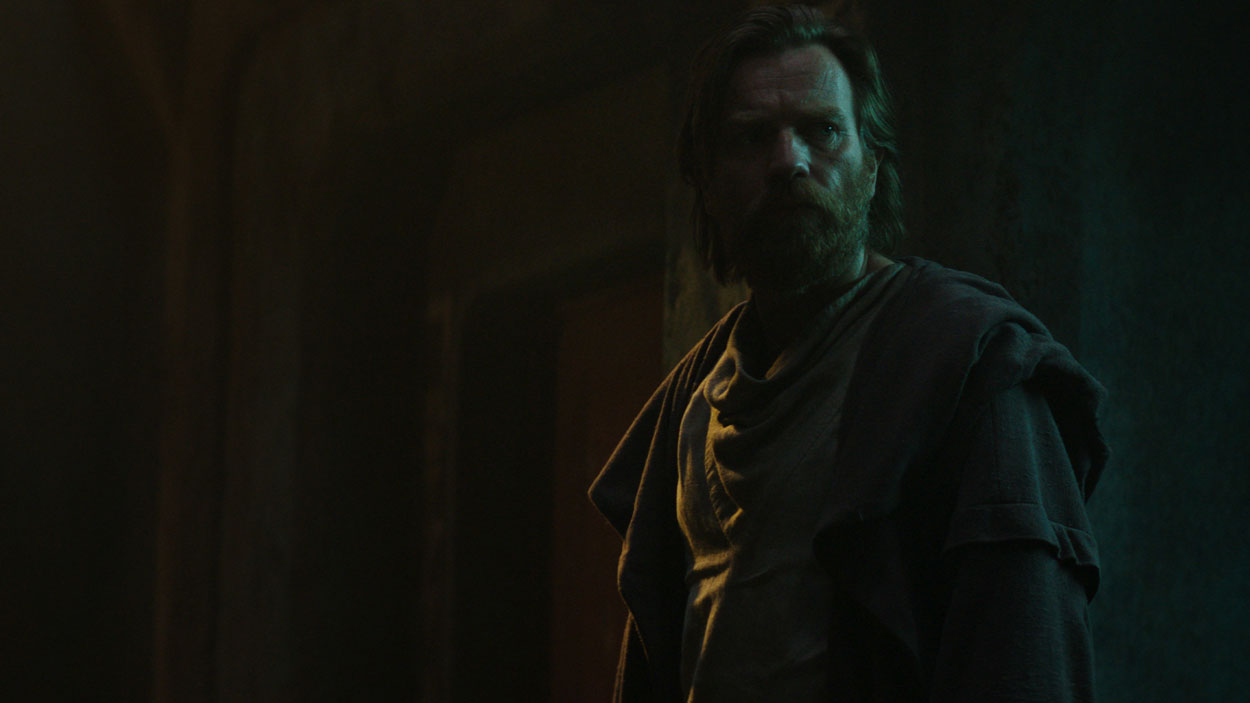
An older, more wizened Kenobi
By contrast, we see Ewan McGregor’s Obi-Wan in the prequel trilogy as a confident, highly capable jedi. He retains Guinness’s wit and wisdom yet where Guinness is restrained and cautious, McGregor is a man of action. Perhaps it was due to George Lucas’s evolving directorial style or maybe it was simply a symptom of the era of the late 90s and early 2000s. The original trilogy’s lightsaber battles were more like fencing between gentlemen, whereas the prequel trilogy featured elaborate acrobatics, ostentatious set pieces and arguably higher stakes than the original films. In the prequel trilogy, Obi-Wan is at his prime, both vocationally and personally. The Clone Wars animated TV series only cemented his popularity in the fandom as a beloved character. The two actors share key similarities—after all, Ewan McGregor wouldn’t have gotten the part if that were not the case—but they nevertheless represent two different sides of the same coin.
The Gap
It’s in the gap between McGregor and Guinness that we meet this version of Obi-Wan. Ten years away from the events of Revenge of the Sith and Obi-Wan is a mere shell of his former self. He’s stuck on Tatooine living out a menial life, all the while keeping a low profile, never far away from Luke. At the end of Sith Obi-Wan brought the baby back to his home in Tatooine and left him in the care his aunt and uncle. Uncle Owen (played by Joel Edgerton) isn’t fond of Obi-Wan and doesn’t approve of his meddling. Owen confronts the exiled jedi for leaving ship parts meant for Luke by his door. Obi-Wan wants Luke to see there’s a wider world out there than just Tatooine but Owen, fearful because of what happened to Anakin, wants Luke to live a sheltered life on his farm.
The main plot conflict comes about as a result of the arrival of the Inquisitors on Tatooine. Former jedi fallen to the dark side, the Inquisitors now hunt jedi at the behest of Darth Vader (played by Hayden Christensen). They have received a tip of a jedi moving through Tatooine and quickly uncover a young jedi named Nari hiding among the people.
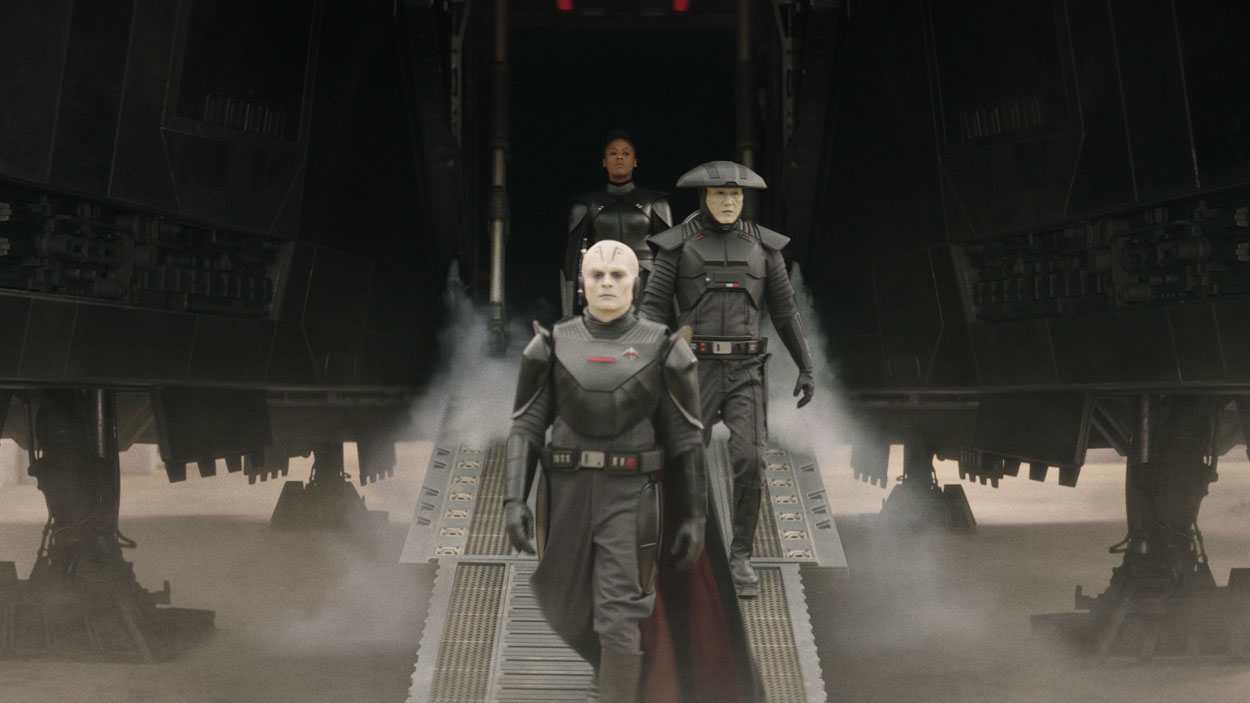
The Inquisitors arrive on Tatooine
As they try to capture him, things go wrong and the true conflict is unveiled: one of the Inquisitors, the Third Sister (also known as Reva), is too brutal and reckless even for the Grand Inquisitor himself. The jedi escapes and Reva’s true motivation is revealed: she’s obsessed with hunting down Kenobi. Though the other Inquisitors believe he’s gone for good, she is convinced he’s still out there. She’s also ambitious; the other Inquisitors remind her that before she came to the Empire, she was “nothing”. We don’t know much about her true origins yet but what we do know is she’s ambitious, confident and completely sure that if she can capture Obi-Wan she’ll gain the favour of Lord Vader.
Reva serves as almost a polar opposite of Obi-Wan, as well as a dark mirror of his previous self. Later in the episode the jedi Nari finds Obi-Wan and begs for his help. He appeals to his past exploits and asks him: “What about the fight?” Kenobi’s only response is: “the fight is done. We lost.” In direct contrast to his previous life where anything could be solved by the swing of a lightsaber and a witty quip, our Obi-Wan has given up completely. Nari hopelessly remarks: “What happened to you?” before disappearing into the night.
Later he is found dead, strung up in the middle of town: a reminder of what happens to jedi who try to help others. Surprisingly though, the main plot takes us away from Tatooine and it’s not because of Luke; rather, because of his sister.
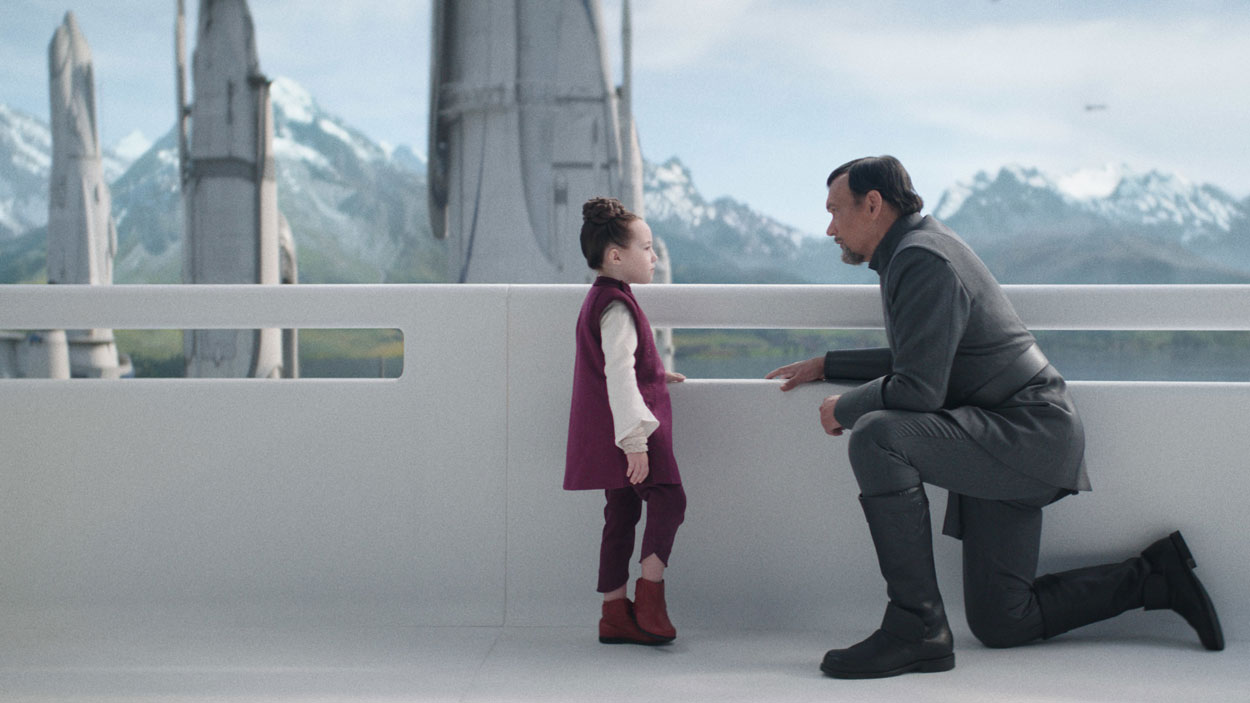
Leia and her adoptive father Bail Organa share a moment
When the 10-year-old Leia is kidnapped from her home in Alderaan and her adopted father begs Obi-Wan to rescue her, he’s suitably reluctant. Even when he finds his young friend on the dark city-planet of Daiyu, there’s doubt as to whether he’s still got what it takes to save the day. The innocent Leia even wonders out loud if he’s a real jedi (a notion which is quickly abandoned after a spot of force-wielding). Throughout both episodes Reva looms over Obi-Wan, going so far as to act in opposition to the Grand Inquisitor and at the end of episode 2 stabbing him so as not to have to share credit for Kenobi’s capture (he seems to die but Star Wars characters often have a hard time staying permanently dead).
What’s in a Name?
Star Wars is a tricky beast these days—what was once a simple trilogy of films morphed into six, then nine with the oft-maligned sequel trilogy (which Obi-Wan Kenobi mercifully has no reason to refer to). The sequel trilogy did much to distance itself from the prequels altogether, choosing to reference (and sometimes rip-off wholesale) the original trilogy, hoping to perhaps recapture that original feeling of wonder and awe the films first evoked in the 1970s. Whether they did or not isn’t up to me to decide but what I did feel thoroughly was the way Obi-Wan Kenobi is embracing the prequel trilogy. It’s not something that has happened very much in the Star Wars universe. The Mandalorian and The Book of Boba Fett have made much progress in returning the franchise back to the low-budget spaghetti western feel of the original trilogy. Rogue One served as an action-packed prequel to A New Hope by setting up the premise of the latter film’s opening conflict. This, along with the animated shows The Clone Wars, Rebels and The Bad Batch serve as tools to build the Star Wars world in the gaps between the films. Some fans even consider The Clone Wars TV series as an accompaniment to the prequel trilogy, filling out the established storyline and introducing new characters in a way the films couldn’t.
One criticism of these pieces of media however is that despite the fact they have their own stories, characters to care about and villains to hate, they’re only loosely connected to the overall Skywalker story arc. They’re worldbuilding more than anything else. Obi-Wan Kenobi is different—it’s part of the main story and its unfolding plot will change the way Star Wars fans see the gap years between Sith and Hope.
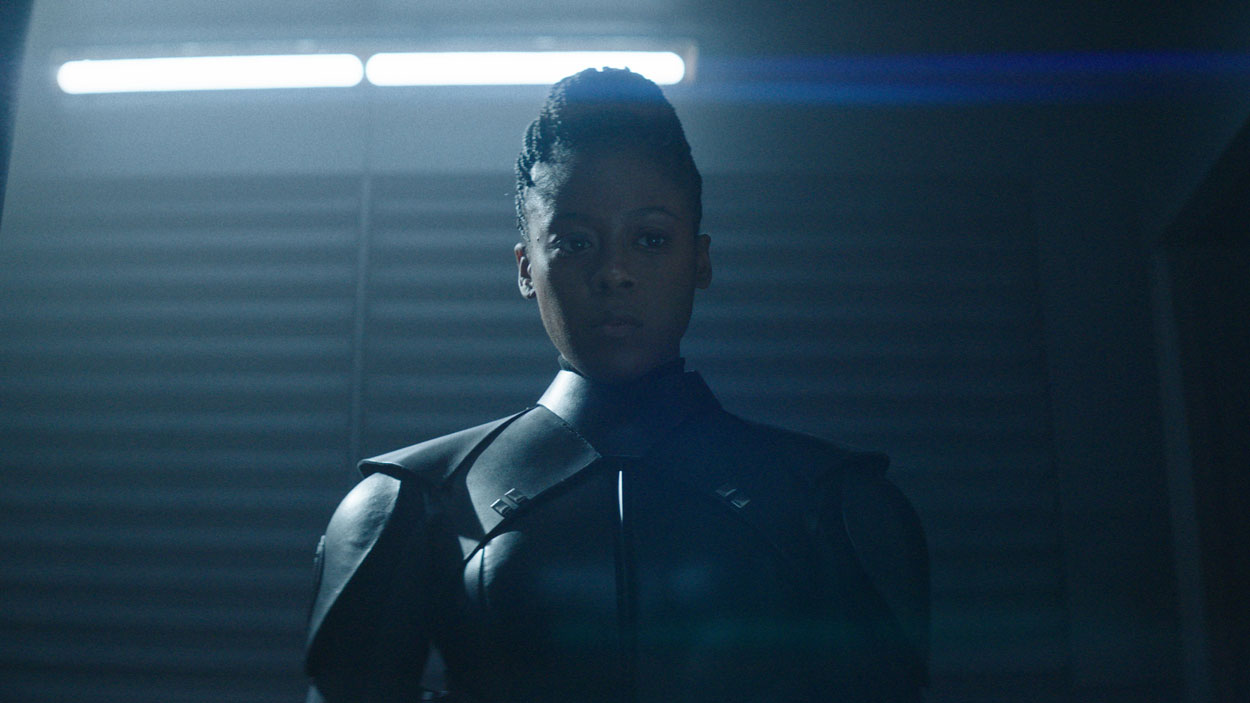
Reva makes a discovery
It’s early days yet but so far, I’ve liked what I’ve seen. Some critics have panned the first two episodes for not being more ambitious—a fair criticism. The choice to air both together was probably the right choice in retrospect. The comparatively muted tone of Tatooine contrasted harshly with the neon-wrapped Daiyu. I do worry, however that the Leia subplot is a mere plot device: a reason to get Obi-Wan to engage with the world he’s abandoned. Likewise, though our main villain is surely Vader, Reva is introduced early on as a more human antagonist. In reality, she seems to exist mostly as a plot device as well—after all, it’s only because of her that Leia is captured and Obi-Wan is forced to leave his solitude and take action. It hasn’t helped that some in the fandom have attacked Reva’s actor Moses Ingram for a variety of reasons, many of them being rooted in racism. Sadly it’s not the first time Star Wars actors have been the target of racially-fueled attacks, as John Boyega, Kelly Marie Tran and even Ahmed Best (who played the CGI Jar-Jar Binks in the prequel trilogy) have suffered their own share of hate.
McGregor is also working hard to bridge the aforementioned gap between Sith and Hope. In interviews he’s remarked on this transition, having listened to extensive audio tapes of Guinness and working on his own vocal cadence to blend his character with the older gentleman warrior. So far, so good.
Despite the differences between Guinness and McGregor, for many in my generation, McGregor is our Obi-Wan. I have the utmost respect for Sir Alec Guinness, whose film career is second-to-none but there’s something undeniable in McGregor’s performance. Seeing his more vulnerable, weak side creates potential for much more interesting storytelling than we’ve seen in Star Wars up until this point. I’m hoping that the Obi-Wan Kenobi team take this opportunity to create a smaller story to more meaningfully flesh out the tragedy that lies between Anakin and Kenobi. I remain cautiously hopeful, but as Master Yoda says: “difficult to see; always in motion is the future.”
Jesse Herford is a pastor and associate editor for the Australian/New Zealand edition of Signs of the Times. He lives in Sydney, Australia with his wife, Carina and their dog, Banjo.









